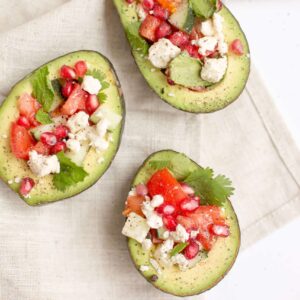What is healthiest diet for you? Read on to learn a new perspective and decide what kind of food you should eat for vibrant health.

In the first post of this series, I share my personal story with diet and health and cover the fundamental principles of healthy diets. In the next post, I will share the incredible concept of “bio-individuality.” Hint: what works for your neighbor may not work for you.
My Story About The Healthiest Diet
Nineteen years ago, when I began my journey as a mother, I became deeply interested in nutrition for the sake of my children. As many women do, I strove to eat healthier than ever when I became pregnant.
I bore two healthy boys in two years. All was well, except I was worn out – having two under the age of two and in diapers can do that. I looked for ways to boost my health to meet the many demands of young children.
Shopping at a farmer’s market one Sunday, I heard a name that changed my health and gave me back my vitality. I believe this person and his research are the root cause of the vibrant health of my, now three, boys. All three of my children perform tremendously in school, have excellent energy levels, are not overweight, sleep soundly at night, have only taken antibiotics a couple of times, and no one takes prescription medication.

Our family is far from perfect, but this way of eating has produced outstanding results for me and is why, so many years later, it is my go-to method for eating when new fads and new, contradicting research are published.
The Source of the Healthiest Diet
What is that name that rocked my world, you ask? Dr. Weston A. Price
When I encountered Dr. Price’s book, Nutrition and Physical Degeneration, I found a huge, dense 500+ page book. I read it cover to cover and was spellbound.
Back in the 1930s, Dr. Price went around the globe studying isolated cultures untouched by modern society and reported their health statistics, what they ate and how they lived. This unique approach piqued my interest. Dr. Price did not create laboratory experiments comparing one group living in the modern world eating one version of a modern diet to another group eating a different version of a modern diet.
Also, he did not just look at how these diets affected their health over a few years. The people Dr. Price reported about ate the traditional diet of their culture generation after generation and had a vibrancy of health almost unknown today.

There was great variety in the foods of the different cultures he studied, but also some striking similarities. The Weston A. Price Foundation created a list of commonalities in the diets of these unique communities:
“Characteristics of Traditional Diets – 11 Principles
- The diets of healthy, nonindustrialized peoples contain no refined or denatured foods or ingredients, such as refined sugar or high fructose corn syrup; white flour; canned foods; pasteurized, homogenized, skim or lowfat milk; refined or hydrogenated vegetable oils; protein powders; synthetic vitamins; or toxic additives and artificial colorings.
- All traditional cultures consume some sort of animal food, such as fish and shellfish; land and water fowl; land and sea mammals; eggs; milk and milk products; reptiles; and insects. The whole animal is consumed—muscle meat, organs, bones and fat, with the organ meats and fats preferred.
- The diets of healthy, nonindustrialized peoples contain at least four times the minerals and water-soluble vitamins, and TEN times the fat-soluble vitamins found in animal fats (vitamin A, vitamin D and Activator X, now thought to be vitamin K2) as the average American diet.
- All traditional cultures cooked some of their food but all consumed a portion of their animal foods raw.
- Primitive and traditional diets have a high content of food enzymes and beneficial bacteria from lactofermented vegetables, fruits, beverages, dairy products, meats and condiments.
- Seeds, grains and nuts are soaked, sprouted, fermented or naturally leavened to neutralize naturally occurring anti-nutrients such as enzyme inhibitors, tannins and phytic acid.
- Total fat content of traditional diets varies from 30 percent to 80 percent of calories but only about 4 percent of calories come from polyunsaturated oils naturally occurring in grains, legumes, nuts, fish, animal fats and vegetables. The balance of fat calories is in the form of saturated and monounsaturated fatty acids.
- Traditional diets contain nearly equal amounts of omega-6 and omega-3 essential fatty acids.
- All traditional diets contain some salt.
- All traditional cultures make use of animal bones, usually in the form of gelatin-rich bone broths.
- Traditional cultures make provisions for the health of future generations by providing special nutrient-rich animal foods for parents-to-be, pregnant women and growing children; by proper spacing of children; and by teaching the principles of right diet to the young.” (1)
Today, I strive to meet all these principles, yet I still have improvements to make. But I have a clear guide and compass to steer me on the path.

In general, I have been able to follow these principles of this healthiest diet while living a modern life by focusing on:
1. eating whole foods whenever possible,
2. pasture-raised/wild-caught animal products,
3. traditional, unprocessed fats,
4. properly-prepared whole grains, (see post “Are Low Inflammation Grains Real? for all the details about making grains healthier)
5. fermented foods,

6. bone broth,
7. clean water,
8. sea salt and herbs for flavor (not processed chemicals),
9. low sugar treats,
10. little alcohol,
11. healthy cooking and storage equipment,
12. natural vitamins and supplements,
13. make sure I get enough sleep,
14. move my body,
15. get outside, and
16. have a strong mind and,
17. have a loving heart.

A few notes:
- Organ meats still bring me challenges, so I choose to eat large quantities of vegetables and fruits to obtain similar vitamin and mineral nutrition.
- I choose low histamine probiotics sometimes because fermented foods can be very high in histamines.
- As a single mom, I am still working to make the time for properly-prepared seeds, nuts, and grains. But I have some tips and tricks in the post “Are Low Inflammation Grains Real?”.
The organization Nourishing Our Children, see Resources below, has a great video to learn more about how this diet relates to children. (2)
Knowing what the healthiest diet is doesn’t have to be confusing. I rely on generations of healthy people and my own results to guide my choices every day.
Read these posts for more:
Diets that reduce inflammation
Spices that are Anti Inflammatory
GOAL SETTING Define Who You Want to Be
Resources:
(1) https://www.westonaprice.org Eating healthy traditional real food site
(2) https://nourishingourchildren.org Eating traditional real food for kids site
Don’t forget to share your favorite posts with friends and family – get the word out about easy healthy eating!
This blog post is for informational and educational purposes only. It is not intended to treat any health condition or to be prescriptive for anyone. Always be sure to work with your healthcare practitioner before making any changes.
Also, share your comments below. I’d love to know what you think about this recipe.
Don’t miss the future posts that go into more detail about some of these healthiest diet points. Sign up for my weekly newsletter:






